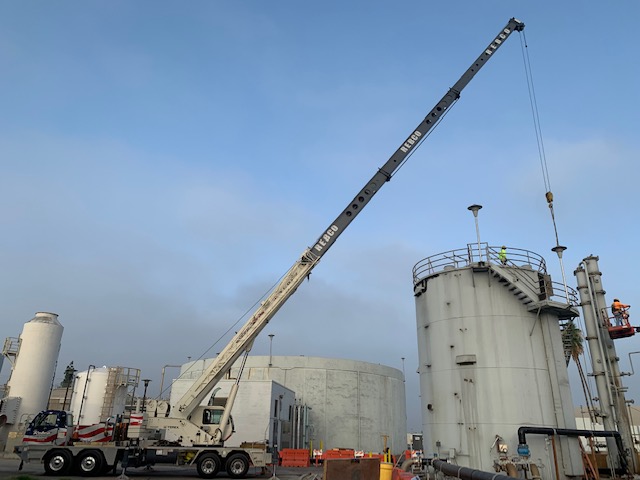A spreader bar is a tool used in crane-assisted lifting, which operates by lowering the load below the hook. This is used specifically when lifting enormous increments that require something to divide the burdens to avoid mishaps.
Spreader bars are generally made of pipe and have lifting points at the top and bottom on opposing ends. They are suspended from two slings by a crane and often have two to four bottom slings attached for rigging to the load.
Spreader bars, for example, are always in compression and are constructed with various pipe diameters and thicknesses to achieve the necessary design factor to satisfy the maximum rated capacity. Spreader bars are the optimum solution for loads with several lift points and a need for load control.
Spreader Bars vs. Lifting Beams for Overhead Cranes
Spreader beams are among the most often used below-the-hook lifting devices in the material handling sector. Spreader beams, like lifting beams, are used to increase the number of potential lifting points on rigged loads and keep lifting slings at a 90° angle relative to the horizon. Spreader bars convert vertical lifting forces into compression forces on the beam, as opposed to lifting beams, which convert vertical lifting forces into bending forces on the beam.
Lifting and rigging spreader bars are made up of a beam with two or more lifting lugs on the bottom that attach to lifting slings that attach to the weight. The top attachment is what distinguishes them from lifting beams. Spreader bars are carried by a multi-leg sling that attaches to the bails on top of the spreader beam rather than a single-centered bail that links to a crane or hoist hook.
Why You Should Choose Spreader Bars for Overhead Cranes?
If you are unsure about which Spreader bars to use on overhead cranes, consider the following advantages to help you decide:
- Spreader beams are particularly effective in lifting extra-wide and heavy-duty loads.
- Spreader beams transform lifting forces into pure compression forces, allowing them to be less stiff than lifting beams. This means they use less material and are often smaller, lighter in weight, and less expensive than lifting beams.
- The use of two lifting points on top of spreader beams evenly distributes the load’s weight and eliminates the issues associated with putting stress on a single lifting attachment. This one-of-a-kind design decreases the likelihood of the load toppling, sliding, or bending, as well as the risk of crushing or harming the load.
- A spreader bar is often used when the weight is too heavy for numerous slings to raise and something needs to be placed underneath to keep it steady.
- You do not have to pay for maintenance when you rent spreader bars. It is the company’s job to keep the equipment in good operating order. You will receive spreader bars in perfect operating condition. You also don’t have to bother about pre- and post-use storage.
- Before renting a spreader bar or any other piece of equipment, it must pass a set of stringent safety examinations. Qualified personnel perform safety checks to guarantee proper rigging.
If you need spreader bars for overhead cranes for your next project, contact Rebco Crane and Rigging Services for high-quality spreader bars rental tailored to your specifications.
